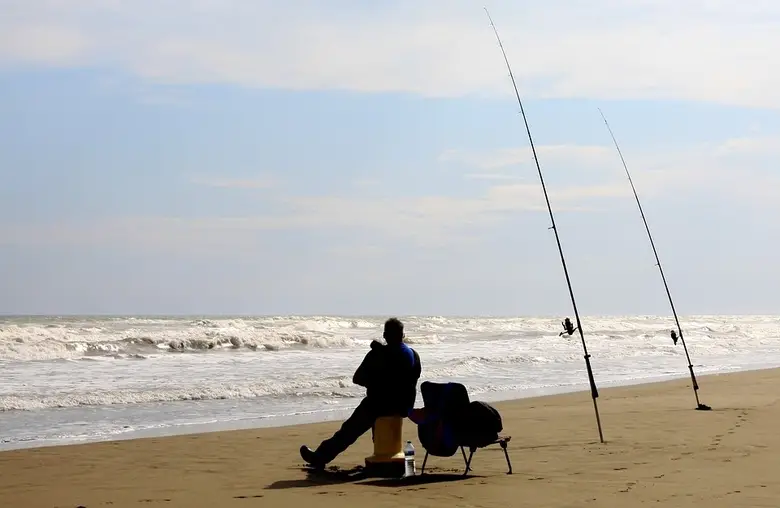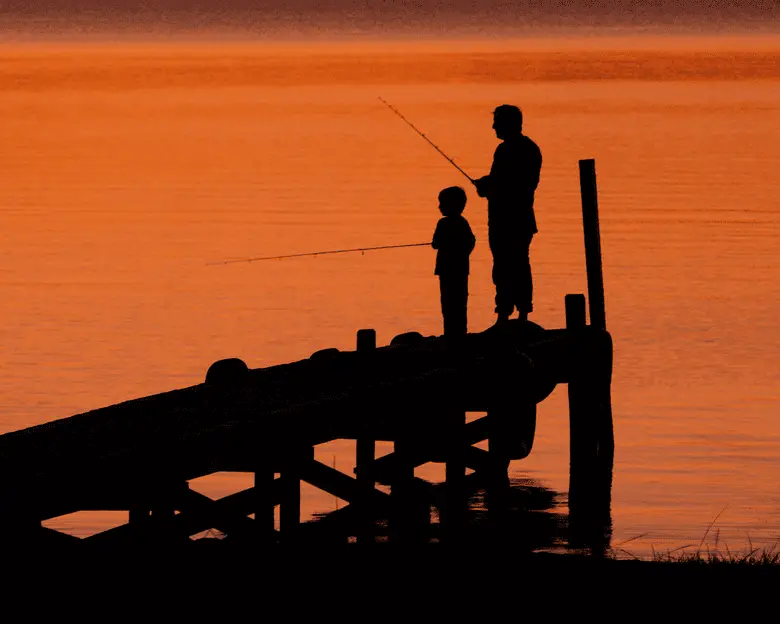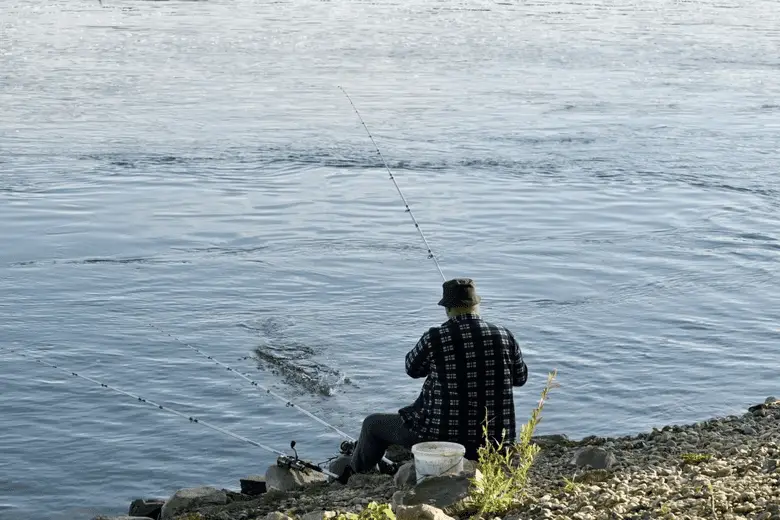The issue of baitcasters being hard to use is still reasonably prevalent.
I often tell people that with proper instruction, practice, and a solid grasp of what baitcasters do, they aren’t difficult to use.
However, if I am asked to compare a baitcaster with a spinning reel, I suggest the baitcaster is harder to master than a spin reel.
With baitcasters, a number of variables need to be taken into consideration. Some are subjective, some are environmental, and some are related to the reel itself.
This leaves us in the unhelpful position where we conclude…Are baitcasters hard to use?
Well, it depends.The bottom line is that if you want to master the baitcaster, then you will.
The baitcaster takes a little more determination and patience for many anglers to learn, whereas the spin reel can be mastered relatively quickly.
Let’s unpack the baitcaster ‘difficulties’ issue and get things in perspective.
Baitcasters are awesome and great fun to use. Mastering the baitcaster adds depth and versatility to your fishing skills, so I strongly advise that all anglers learn how to use them.
Page Contents
Why Use A Baitcaster Reel
The main reason we use a baitcaster over a spinning reel comes down to nothing more than personal preference. Yes, it is a little more nuanced than that, but preference is the bottom line.
The reason I say this is that the level of application crossover between the two-reel styles is pretty well 100%.
In terms of catching fish, the average angler won’t catch any more fish using one reel over the other in the bulk of applications.
Spin and baitcaster reels are often pitted against each other and have been for decades. The truth is, one is no better than the other, they’re simply different.
It is true, however, that spin and baitcasters have individual properties that might make them better suited for particular applications.
For example, the lightest of finesse fishing is nearly always best using a spinning reel.
In situations where precise casting accuracy and speed are critical, the baitcaster is frequently the better option.– more on that later.
Are Baitcasting Reels Hard to Use?
Firstly, we should clear up what a baitcaster is.
Except for fly and centrepin reels, there are three types of reels that have the same basic configuration – the baitcaster, the traditional reel (overhead), and the game reel.
Overhead or traditional reels are frequently lumped in with baitcasters, yet shouldn’t be.

Traditional reels are larger than baitcasters and are used for the heaviest of inshore applications, such as surf and rock, but predominantly reels for outside the heads, offshore, and blue water.
When we consider the barrel or round-shaped baitcaster, things get a little cloudy in terms of identification.
Essentially, the round baitcaster will be smaller than the traditional reel. The dominant baitcaster shape these days is the low profile baitcaster.
The other reel that shares this configuration is the game reel.
There’s no mistaking the game reel, they’re huge, heavy, and quite obviously designed for the absolute largest ocean predators, and almost exclusively trolled, but for a few exceptions.
They certainly can’t be cast.
With this established, those who cast baitcasters or traditional style reels face the same age-old problem, backlash. Backlash is pretty well the only reason baitcasters are tricky to master.
Indeed, the problem of backlash is traditionally so pervasive, that it was the reason the spincast and spin reels were invented in the first place – to make casting easier.
We’ll look at backlash in detail a little later.
If it wasn’t for backlash, it would be hard to see how the spin reel would have become the dominant reel on the market.
By virtue of its design and configuration, the baitcaster is stronger, more stable, far less prone to twisting, and will usually hold far greater volumes of larger diameter fishing lines.
The low centre of gravity and their compact size deliver outstanding casting and fish fighting ergonomics. Angler fatigue is reduced, and efficiencies are increased.
Arguably, this is why angling professionals such as Bass pros gravitate toward the baitcaster.
Pros are on the clock, and there’s money at stake. Anything that promotes fishing efficiencies, from cast to fight will be preferred.
When you’re fishing the inshore waters, drifting, trolling, pitching, flipping, or rapid casting, the baitcaster promotes efficiency.
You’re also well placed to battle inshore monsters, should you hook a prize fish on your 100 size Curado.
Strength is less of a baitcaster distinction these days as spin reel strength and twist reduction have improved beyond measure.
Ultimately, it’s backlash that causes all the problems with the baitcaster.
So let’s have a look at backlash, better known as the regrettable birds’ nest. What is it, and why is it such a pain?
What is a Baitcaster Birds Nest?

A bird’s nest (backlash) comes as a result of spool overrun when casting a baitcaster or traditional reel.
Overrun is when the spool spins faster than the line is peeling from the spool. (See Video 3 Below for a visual demo of backlash)
Often, the result from overrun is a knot so horrendous that it looks like a bird’s nest.
Bad examples might require cutting away half a spool of fishing line, and wasting a lot of time without a bait in the water.
It’s not uncommon to deal with an infuriating bird’s nest, only to clean up the disaster, re-rig, and get an even worse one the very next cast.
Bird’s nests can vary significantly in severity, from devastation to being able to pull it out by hand in seconds.
Despite huge advances in spool braking technology, every cast of a baitcaster or overhead reel could result in backlash.
Reel design boffins haven’t been able to come up with a technology that defies physics. And if they haven’t done it now, it’s unlikely they ever will.
Interestingly, the only guaranteed way to avoid backlash is to use a spin reel. While this sounds very gloomy, it’s not really.
With a little practice, development of good technique, feel and reel understanding, backlash shouldn’t ever become so problematic that it destroys your day on the water.
So, how hard is it to learn and master the baitcaster?
How Hard is it to use a Baitcasting Reel?
Casting a traditional reel was considered so challenging decades ago that it was believed to hinder the growth of recreational fishing.
It was considered so difficult that inventors decided there had to be a better way.
Indeed there was, and necessity brought us the spincast reel, immediately followed by the spinning reel.
Both reels were vastly easier to master, with the spin reel eventually coming to dominate reel sales, as they do today.
The spin reel was not only easier to cast, but it was also cheaper. This critical combination is likely responsible for the huge growth in recreational angling with rod and reel.
The spincast and spin were so easy, a child could master casting very quickly.
There’s still a level of snobbery attached to the traditional/baitcaster reel. As it required a precision, deft touch, it was always believed superior.
Fortunately, this reel snobbery is all but relegated to the past. But is the modern baitcaster that difficult to master?
Or should you stick to spin? The answer is an emphatical, no. It’s not THAT difficult. Learn to use a baitcaster, it’s not as hard as it is rumoured to be.
The only reason many potential baitcaster users are turned off is that the bird’s nest can be such a pain.
When you’re learning, birds’ nests are inevitable. As you get better, instances reduce so significantly as to be statistically irrelevant.
Keep in mind, however, even the pros, the best of the best, will get the occasional bird’s nest. Physics catches up with all of us at one point or another.
The truth is, that some people will find baitcasters quite easy to learn and master, taking only hours to get the feel.
Others will respond quickly to instruction and practice, getting the feel over a few sessions, and a few will require patience and plenty of casting to get the feel.
Mastering baitcasters depends very much on the person. Those with good hand-eye coordination usually get the basics fast, with few birds nests to speak of.
Interestingly, I am often asked if a beginner should use a baitcaster. Let’s look at this a little closer.
Should a Beginner Use a Baitcaster?
Firstly, let’s establish what a beginner is. Anybody using a baitcaster reel for the first time is a beginner. However, the question is pointed toward the beginner angler.
Again, the answer is it depends. A beginner angler is learning a lot of things, and the first thing they want to do is catch a fish.
If much of the first days of learning to fish is dominated by learning to cast and removing bird’s nests, then using a baitcaster might be counterproductive.

It will very much depend on the person and their ability to grasp casting skills. Generally speaking, it will vary from person to person.
The short answer is there’s nothing wrong with learning to fish using a baitcaster.
But I would discourage a beginner from buying a baitcaster and hitting the water without instruction or experienced support.
If Mr and Miss 12 year old are getting instruction from dad, who’s very experienced with baitcasters, then great.
The bottom line is the enjoyment of fishing. So if learning to cast a baitcaster is encroaching on the enjoyment of fishing, switch to spin.
The best tip I can give for learning baitcasters is to separate casting education from fishing.
Learn to cast in the backyard, in a park, or wide-open space. This way the primary focus is all on casting, not catching fish.
When mistakes are made, there’s no sweat, you are not solving backlash catastrophe while everybody around you is hauling fish.
Ultimately the focus on casting versus fishing encourages beginners to acquire the skills much faster.
When To Use A Spinning Vs Baitcasting Reel
There are no rules to this question and it is very much about personal preference.
Having said that, anglers new to baitcasters should be aware that fishing ultralight with baitcasters takes some serious skill.
For finesse anglers, and those who fish ultra-light, small spin reels are nearly always the best choice. Spin does the light stuff better, and few would argue this point.
For those anglers looking for the ultimate in accuracy and casting efficiency, the baitcaster tends to do it better.
A well-balanced baitcaster outfit feels more like an extension of your arm, promoting effortless casting.
The configuration and profile of a baitcaster have the sort of ergonomics that promote efficiencies.
What Kind of Baitcaster is Best for Beginners?

I believe any good baitcaster is great to learn with. Don’t get hung up on braking systems, centrifugal, magnetic, or combination.
Casting a baitcaster is all about learning timing and feel, and you can learn this with no brake system.
Beginners need to learn how line choice and wind impact casting. They need to learn about thumbing the spool, anticipation, and what fine-tuning brakes do to a cast.
In my opinion, all good baitcasters provide a solid platform on which to develop these skills.
Feel is critical, so I would always advise those getting a new baitcaster to feel it before they purchase. A baitcaster that sits comfortably in your hand is a great start.
How to Cast a Baitcaster
Here are a couple of instructional videos that will provide a great introduction to those new to baitcasters.
There are frequently subtle differences from angler to angler. Experiment with many, then refine the one that suits you best.
Video 1
Video 2
The Verdict
Compared to the spinning reel, the baitcaster is harder to learn and master. However, with frequent use and/or practice, casting a baitcaster will become second nature.
Baitcasters are awesome fishing reels, accurate, powerful, and can cast for miles.
Feel, ergonomics, and casting efficiencies are truly something else, which is why they are the first choice of so many pros.
While a little tricky and even frustrating at first, learning the baitcaster is worth every moment of your time.
Baitcaster proficiency adds significant depth to your fishing skills, and that’s something we all want.
Sharing is caring!
